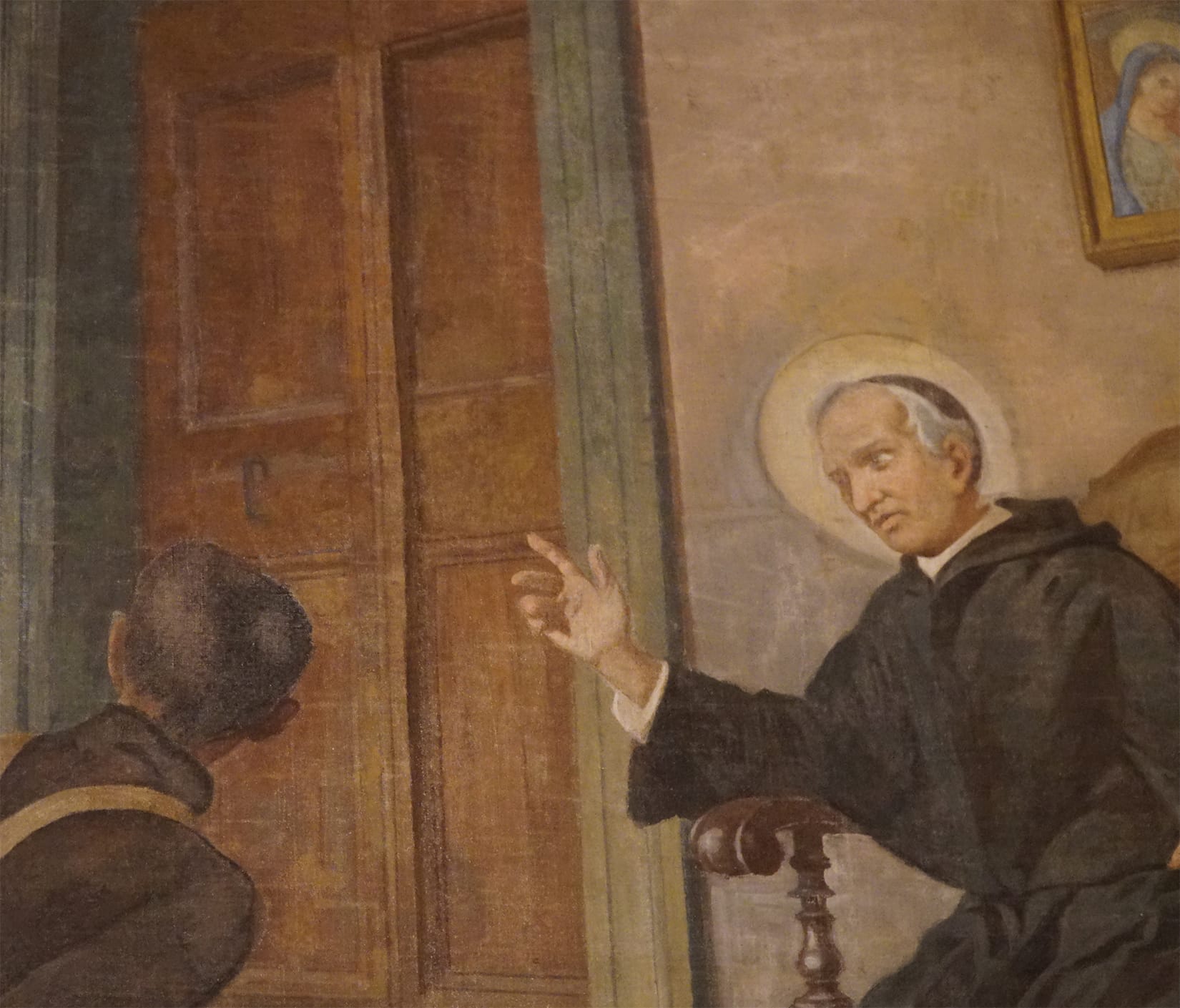The Blessed Augustinian was committed throughout his life to the education of the youth, taking care of their human and Christian formation in an environment adverse to religion.
Blessed Stephen Bellesini, whose feast is celebrated on February 3, worked for many years in the education of young people, especially during his years in Trent.  He dedicated himself intensely to the education of the youth, taking care of their human and Christian formation in that environment so adverse to religion. His educational methods, which in many ways anticipated those that years later would be popularized by St. John Bosco, earned him the trust and appreciation of the civil authorities of Trent.
He dedicated himself intensely to the education of the youth, taking care of their human and Christian formation in that environment so adverse to religion. His educational methods, which in many ways anticipated those that years later would be popularized by St. John Bosco, earned him the trust and appreciation of the civil authorities of Trent.
Miguel Angel Orcasitas OSA, shows his concern and advice for the teaching of religion to young people.
Instructions for teachers in: “Rules for the teachers of the elementary schools of Trent”.
“The teacher must begin first with the small things and then pass on to the greater; indeed, he must first of all excite the moral feeling in the pupils, making them understand from whence springs the inward pleasure they savor in doing good, rather than the bitterness and shame in doing evil; whence he will conclude how much they must love, obey and be pleasing to their parents and to those who do good to them, and  especially to the supreme benefactor who, as a universal Father, pours out all good upon us. [To this end, let the teacher show a profound veneration for God, pronouncing his most holy name, and a lively regret for the offenses that are done to him, showing resignation to his divine designs. He should inspire these sentiments in the children, not with long reasonings, but with brief expressions, with appropriate sentences from some short narration taken from Sacred Scripture, or with some example taken from history, making them give their judgment and the reasons why they judge in that way. Let the teacher pay attention to what he speaks, praises or reproves in the presence of the children; not to burden them with long sentences and to teach them not to be satisfied with externalities. Suddenly the teacher will see that the intelligence and reason of the children begin to develop at the same time as the feeling of their conscience. […] From the benefits they receive from their parents, lead them to God, the giver of all good, and then give them an idea of his attributes through the observation of order, concatenation and beauty, always trying to excite in them a feeling of correspondence. Add to this the knowledge of the immortality of the human soul, of the future life, of eternal rewards and punishments, proposing them as infallible truths to be believed…” [GOBBI, Educare l’uomo… 42-43] [excerpts in Augustinian Liturgy of the Hours, on the feast of Bl. Stephen Bellesini]
especially to the supreme benefactor who, as a universal Father, pours out all good upon us. [To this end, let the teacher show a profound veneration for God, pronouncing his most holy name, and a lively regret for the offenses that are done to him, showing resignation to his divine designs. He should inspire these sentiments in the children, not with long reasonings, but with brief expressions, with appropriate sentences from some short narration taken from Sacred Scripture, or with some example taken from history, making them give their judgment and the reasons why they judge in that way. Let the teacher pay attention to what he speaks, praises or reproves in the presence of the children; not to burden them with long sentences and to teach them not to be satisfied with externalities. Suddenly the teacher will see that the intelligence and reason of the children begin to develop at the same time as the feeling of their conscience. […] From the benefits they receive from their parents, lead them to God, the giver of all good, and then give them an idea of his attributes through the observation of order, concatenation and beauty, always trying to excite in them a feeling of correspondence. Add to this the knowledge of the immortality of the human soul, of the future life, of eternal rewards and punishments, proposing them as infallible truths to be believed…” [GOBBI, Educare l’uomo… 42-43] [excerpts in Augustinian Liturgy of the Hours, on the feast of Bl. Stephen Bellesini]
Instructions for teachers in: “Rules for the teachers of the elementary schools of Trent”.
“Let the teacher be careful not to mix false and superstitious doctrines, but let him plant and promote in the pupils a solid and true piety towards God and an operative love towards the neighbor” [GOBBI, Educare l’uomo… 44].
Catechesis in St. Augustine’s treatise De catechizazione by Bellesini
“The complete catechetical treatise is found only in St. Augustine and precisely in the book De catechizandis rudibus . The rest speak of catechesis only in some scattered places” [GOBBI, Educare l’uomo . .. 73].
 Importance of religion in Bellesini’s treatise: De catechizazione, lines 63-69.
Importance of religion in Bellesini’s treatise: De catechizazione, lines 63-69.
“In the first place, children must be encouraged to be industrious and creative, which is achieved if they come to understand that religion is of the utmost importance and that great advantages derive from it. To demonstrate this, metaphysics does not help, but we must use practical arguments, adapted to their age and nature. With this method the desire for happiness is aroused in them. The tender age flees from things that are tiring and difficult. That is why instruction should be pleasant and easy. If the teacher is too severe, or is languid and unmotivated, his teaching will not please. If difficult things are presented, they will not understand them and boredom will arise in them. Try to arouse the children’s benevolence and then their desire to learn, by means of praise, gifts and amusements; but one must be careful not to inoculate in them with these things the propensity to vanity. Youth learns much from examples.” [GOBBI, Educare l’uomo… 74-75.]
 Advice for the teaching of religion in Bellesini’s treatise: De catechizazione, lines 155-159; 179-186.
Advice for the teaching of religion in Bellesini’s treatise: De catechizazione, lines 155-159; 179-186.
“Children need moving arguments, especially those that can impress their tender souls. Let virtues be recommended, especially those that are joyful, and let them not be oppressed with fear. Let them be taught that every good deed makes God happy and pleases men. The opposite is the case with bad actions. To awaken in them clear notions, parables, examples, sentences, etc., should be used, but taken from things known to the children, and explained in a way adapted to them. [The method of instructing children in religion differs from that which should be used for adults. It is difficult to enclose in rules this whole process of teaching; experience is worth more than six hundred rules. In general, these are the things to keep in mind: in the first place, he who truly loves children will work fruitfully; in this way he will gain attention and diligence. Secondly, while teaching, behave like a friend. Thirdly, have clear notions himself, precise knowledge of the human soul and of the children’s way of thinking. The method of questions and answers is very useful”. [GOBBI, Educare l’uomo… 77-78]



 Importance of religion in Bellesini’s treatise: De catechizazione, lines 63-69.
Importance of religion in Bellesini’s treatise: De catechizazione, lines 63-69. Advice for the teaching of religion in Bellesini’s treatise: De catechizazione, lines 155-159; 179-186.
Advice for the teaching of religion in Bellesini’s treatise: De catechizazione, lines 155-159; 179-186.